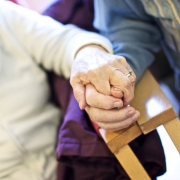The Electronic Palliative Care Co-ordination System (EPaCCS) was developed to ensure that the care of patients felt to be in their final year of life is well co-ordinated. It allows professionals to go to one place and find lots of relevant information. This may include information about a patients diagnosis, likely prognosis, as well as important information about their preferences for future care.
As a health and social care professional, you may be speaking to patients about their wishes and preferences and these resources will show you how to record this information on the EPaCCS template. It will also ensure you know how to quickly access information about a patient who may not be well known to you, to ensure they are cared for in their preferred location and that conversations are not repeated.
In Wakefield, the EPaCCS record is stored on SystmOne and the template is shared between Wakefield, North Kirklees and Greater Huddersfield and all the resources below are relevant across those areas.
EPaCCS training video: Level 1
This 7 minute video will show you how to access the EPaCCS template and also how to understand some of the information recorded. It is relevant to anyone using the EPaCCS template, even if this is ‘read only’ and you don’t record information.
EPaCCS training video: Level 2
This 11 minute video will help you understand how to discuss some of the important information as well as how to input information onto the EPaCCS template. This is relevant to those who will be speaking to patients and documenting on EPaCCS. It is important to watch the Level 1 training video first.
EPaCCS User guide
This User guide complements the training videos and provides written information about the EPaCCS template. It may be useful as a reference.
EPaCCS training learning outcomes
This resource may be useful for those who are delivering face to face training to their staff about using the EPaCCS template. It provides a summary of the important areas to cover to ensure that training meets the needs of its participants. The Level 1 and 2 training videos combined meet all of these learning outcomes.



